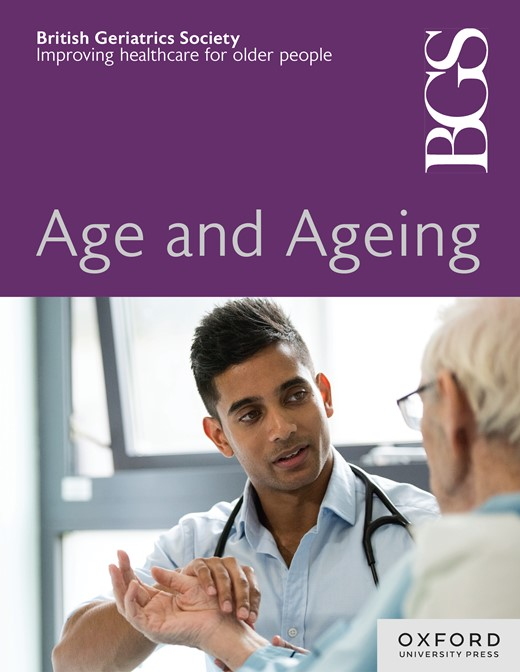Utilisation of nursing home care before and after the 2015 Dutch national reform: an interrupted time series analysis
IF 6
2区 医学
Q1 GERIATRICS & GERONTOLOGY
引用次数: 0
Abstract
Background The Netherlands introduced abrupt, large-scale, long-term care (LTC) reforms in 2015 that promoted ageing-in-place. However, there has been no comprehensive population-level study evaluating how these reforms have impacted nursing home (NH) utilisation. This study examines the association between the 2015 reforms with national monthly rates of NH admissions and survival time amongst newly admitted older adults. Methods We analysed population data from Statistics Netherlands (2011–2019), conducting an interrupted time-series analysis to compare monthly NH admission rates before and after the 2015 reforms amongst adults aged 65 and older (N = 402 350). A Cox proportional hazards model was used to assess the reform’s impact on mortality risk amongst newly admitted residents. Results The adjusted NH admission rate before the reform was 88.80 per 100 000 older adults (95% CI (confidence interval): 82.36–95.83), compared to 69.82 per 100 000 after the reform (95% CI: 65.91–73.78), indicating a significant reduction (incident rate ratio: 0.80, 95% CI: 0.74–0.86). Over a 3-year follow-up, the average survival time for those admitted after the reform was 608 days (95% CI: 608.72–610.74), compared to 622.52 days (95% CI: 620.59–624.45) for those admitted before the reform. The reform was associated with a slightly increased mortality risk (hazard ratio: 1.05, 95% CI: 1.02–1.07). Conclusions The 2015 Dutch LTC reform is associated with a reduction in national NH admissions and a decrease in average survival time of 2 weeks.2015年荷兰国家改革前后养老院护理的利用:中断时间序列分析
荷兰在2015年推出了突然的、大规模的长期护理(LTC)改革,促进了就地老龄化。然而,还没有全面的人口水平的研究评估这些改革如何影响养老院(NH)的利用。本研究探讨了2015年改革与全国每月NH入院率和新入院老年人生存时间之间的关系。方法分析荷兰统计局(2011-2019)的人口数据,进行中断时间序列分析,比较2015年改革前后65岁及以上成年人(N = 402 350)的每月NH入院率。采用Cox比例风险模型评估改革对新入院居民死亡风险的影响。结果改革前调整后的NH入院率为88.80 / 10万老年人(95% CI: 82.36 ~ 95.83),改革后为69.82 / 10万老年人(95% CI: 65.91 ~ 73.78),显著降低(事故率比:0.80,95% CI: 0.74 ~ 0.86)。在3年的随访中,改革后入院患者的平均生存时间为608天(95% CI: 608.72-610.74),而改革前入院患者的平均生存时间为622.52天(95% CI: 620.59-624.45)。改革与死亡风险略有增加相关(风险比:1.05,95% CI: 1.02-1.07)。2015年荷兰LTC改革与全国NH入院人数减少和平均生存时间2周减少有关。
本文章由计算机程序翻译,如有差异,请以英文原文为准。
求助全文
约1分钟内获得全文
求助全文
来源期刊

Age and ageing
医学-老年医学
CiteScore
9.20
自引率
6.00%
发文量
796
审稿时长
4-8 weeks
期刊介绍:
Age and Ageing is an international journal publishing refereed original articles and commissioned reviews on geriatric medicine and gerontology. Its range includes research on ageing and clinical, epidemiological, and psychological aspects of later life.
 求助内容:
求助内容: 应助结果提醒方式:
应助结果提醒方式:


